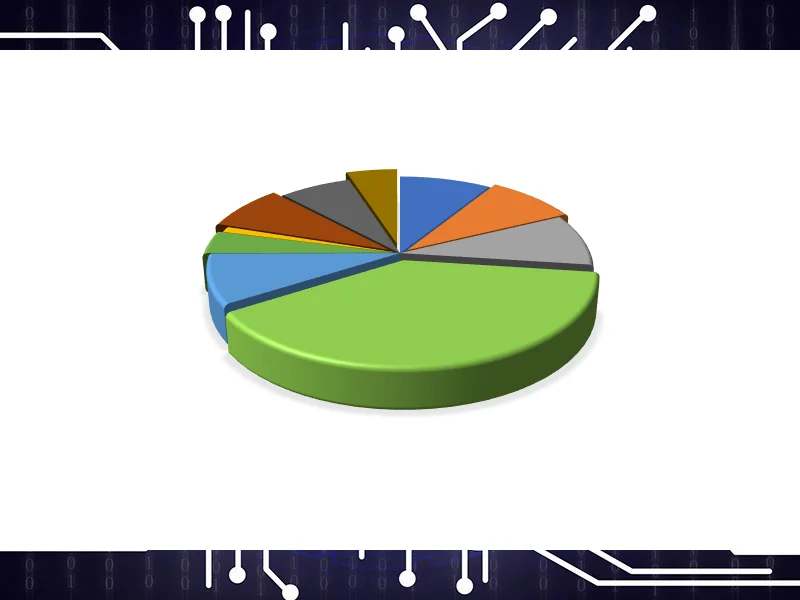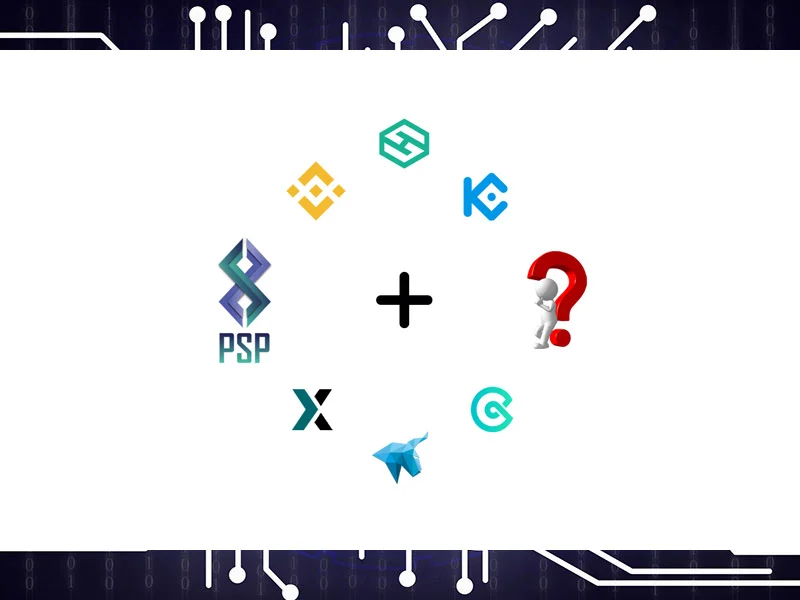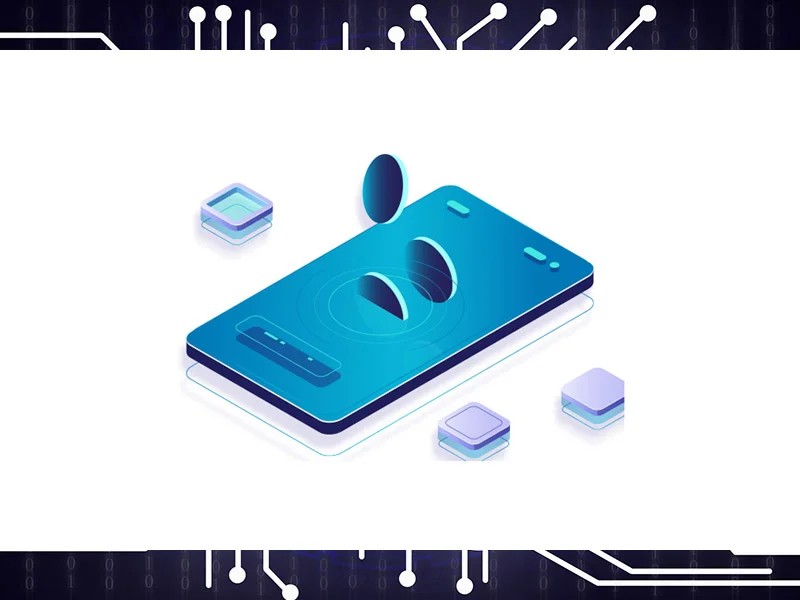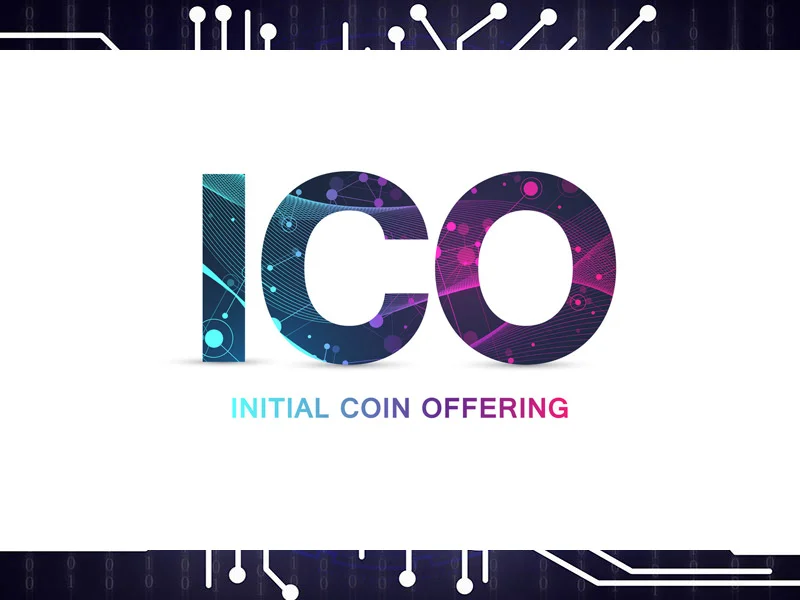SBP: A Revolutionary Blockchain System
June, 2025
Abstract
Praxis Payments aims to offer the first-ever payment system using a unique identifier on
the
blockchain. In addition, unique to our approach is the fact that PSP plans to record
transaction documents on its own blockchain, and hence it intends to implement the first
“targeted mining system” in the digital currency world.
1 Introduction
Smart Binary Pro (SBP) is a decentralized platform that integrates blockchain, advanced artificial intelligence (AI), and optional privacy to deliver transparent, secure, and efficient financial transactions. With features such as Unique Digital Identifiers, Resource-Based Mining, and custom sub-blockchains, SBP empowers users and developers to engage in a decentralized financial ecosystem. Launching in 2025, SBP will roll out its token, official wallet, and decentralized applications (DApps) to drive innovation in Web3 and fintech.
1.1 Vision and Objectives
Smart Binary Pro (SBP) aims to redefine decentralized finance by combining blockchain and AI to create a transparent and secure future. Our objectives are to:
1.Facilitate financial transactions with high transparency and minimal risk.
2.Leverage AI for fraud detection, smart analytics, and process optimization.
3.Provide optional privacy for sensitive transactions.
4.Simplify user experience through AI-driven tools like chatbots and DApps.
5.Foster a decentralized ecosystem to support DeFi projects and businesses.
6.Enable developers to create custom sub-blockchains.
SBP empowers individuals and businesses to participate confidently in a decentralized financial ecosystem without intermediaries.
2 Problem Statement
Despite blockchain advancements, cryptocurrency transactions face significant challenges. According to a 2024 Chainalysis report, crypto scams generated at least $9.9 billion for malicious actors, primarily due to opaque smart contracts. Key issues include:
1.Lack of Transparency in Contracts: Transaction purposes (e.g., purchasing goods or services) are often not recorded on-chain, eroding trust.
2.Complexity of Smart Contracts: Creating smart contracts is challenging and time-consuming for non-technical users.
3.Limited Privacy Options: Many blockchains lack mechanisms to protect sensitive transactions.
Smart Binary Pro (SBP) addresses these challenges through Unique Digital Identifiers, AI integration, and optional privacy, creating a user-centric and secure platform.
3 Innovative Features
3.1 Artificial Intelligence in SBP
Artificial Intelligence (AI) enhances SBP functionality, making it smarter, safer, and more user-friendly. By analyzing data and streamlining processes, AI delivers an innovative experience:
1.Smart Transaction Analysis: AI identifies suspicious patterns (e.g., fraud or money laundering) and flags unusual transactions to maintain transparency.
2.Smart Contract Optimization: AI suggests contract terms based on user needs and predicts transaction risks. For example, it can configure secure payment terms for a product sale.
3.Simplified User Experience: AI-powered chatbots assist non-technical users in creating Unique Digital Identifiers or managing documents.
4.Custom Development for Communities: Developers and non-technical users can leverage AI tools to build tailored DApps, such as specialized financial platforms.
3.2 Optional Privacy
Smart Binary Pro (SBP) offers optional privacy, allowing users to choose between transparency and confidentiality based on their needs. Users can opt for transparent transactions to record documents (e.g., purchase agreements) or private transactions for sensitive cases (e.g., personal financial transfers). Private transactions utilize advanced cryptographic techniques like Ring Signatures and Zero-Knowledge Proofs to ensure security and confidentiality.
To comply with regulations, SBP supports optional KYC/AML protocols. Users or projects can employ on-chain or off-chain cryptographic identity verification when required (e.g., for banking interactions). This design balances decentralization with responsible, legal usage.
3.3 Unique Digital Identifiers
Unique Digital Identifiers in SBP provide an innovative solution for secure asset registration and transactions on the blockchain, enhancing transparency and trust in digital commerce. Unlike traditional NFTs, which are primarily used for art or collectibles, SBP’s identifiers serve as ownership certificates or payment gateways for goods and services.
For instance, a seller can create a Unique Digital Identifier for a product (e.g., a smartphone) and register it on the blockchain. Each identifier is linked to a smart contract that automatically enforces transaction terms (e.g., price, delivery, or warranty). These contracts are optimized by SBP’s AI to minimize risks. This feature transforms SBP into a practical platform for secure, direct digital commerce.
3.4 Resource-Based Mining
Smart Binary Pro (SBP) introduces Resource-Based Mining, an efficient and low-energy alternative to traditional Proof of Work mining. This feature encourages everyday users to contribute to the network by allocating device resources such as storage or processing power.
Unlike energy-intensive mining, SBP users can share storage space or processing power from devices (e.g., smartphones, computers, or servers) to support the network. For example, a user can contribute 10 GB of free storage on their phone to store documents or contracts decentrally and earn SBP tokens as rewards. Data is protected with client-side encryption to ensure privacy.
Users connect as storage or processing nodes via SBP’s official software (released in phase two of the mainnet). Some nodes can provide processing power for off-chain AI analytics, earning higher rewards. In later phases, SBP will integrate with distributed infrastructure like Golem or Akash to enable fully decentralized processing.
Key Features:
•Significantly lower energy consumption compared to traditional mining.
•Enhanced security and accessibility through decentralized data distribution.
•Privacy protection via client-side encryption.
•Accessible participation using standard hardware.
This model strengthens the network with low energy use, high security, and inclusive participation.
4 Technical Details
Smart Binary Pro (SBP) leverages a Proof of Stake (PoS) consensus mechanism, selecting validators based on their SBP token holdings to ensure low energy consumption. Transactions are finalized with a minimum of three confirmations in an average of one second, boosting speed and efficiency.
To ensure scalability under high load, SBP employs periodic transaction batching in 24-hour intervals, optimizing data processing and resource allocation. Dynamic sharding further distributes network load across sub-blockchains and nodes, maintaining performance during peak traffic or computational demands.
This architecture integrates with Resource-Based Mining (section 3.4), where storage and processing nodes serve as validators, record documents, execute smart contracts, and perform off-chain data analytics. All data and transactions are encrypted using advanced cryptographic algorithms to ensure user privacy and system security by default.
4.1 AI Implementation
In its initial phase, SBP employs a hybrid AI model for smart transaction analysis, smart contract recommendations, and non-technical user support. This implementation focuses on three core areas:
•Transaction Pattern Analysis: Simple yet reliable models like Decision Trees and Logistic Regression identify suspicious transactions (e.g., fraud or money laundering). By evaluating factors such as transaction volume, frequency, and associated addresses, the system assigns risk scores. These models are developer-friendly, allowing for future enhancements by the open-source community.
•Smart Contract Recommendations: A rule-based system analyzes user needs (e.g., “rent payment” or “digital service sale”) and semi-automatically suggests suitable smart contract templates. Future iterations will incorporate machine learning for greater sophistication.
•AI-Powered Chatbot Support: A natural language chatbot assists users in creating Unique Digital Identifiers, setting up simple contracts, or resolving platform issues. Initially off-chain, this tool will transition to a decentralized model in later phases.
•Infrastructure: AI models are initially executed on secure off-chain servers, with results transmitted to the SBP network. In the future, decentralized computing platforms like Golem or Akash Network will enable distributed AI processing.
•Development Path: All algorithms and source code will be open-sourced, enabling developers to review, improve, and propose enhancements. Over time, AI models will evolve from static to dynamic, learning systems optimized through user interactions.
4.2 Privacy Layer
SBP’s privacy layer allows users to choose between transparent and confidential transactions. Advanced cryptographic protocols, such as Zero-Knowledge Proofs (ZKP) and Ring Signatures, enable optional anonymization. ZKP allows users to verify transaction validity without revealing details (e.g., amount or recipient).
By default, transactions are transparent to maintain network integrity, but users can activate privacy for sensitive transactions (e.g., personal transfers). To ensure regulatory compliance, SBP supports optional on-chain or off-chain KYC/AML verification. This feature, set for development in phase two of the mainnet, balances security and flexibility.
4.3 Custom Sub-Blockchains
SBP’s custom sub-blockchains enable projects to launch dedicated blockchains on the main SBP infrastructure, enhancing scalability and flexibility. Each sub-blockchain operates independently but remains interoperable with the main SBP network, supporting DApps, local contract registration, or high-volume transactions.
For example, a DeFi platform can deploy a sub-blockchain for rapid transaction processing. These sub-blockchains leverage processing nodes (section 3.4) and AI analytics (section 4.1) for optimal efficiency. By isolating project-specific transactions, this model preserves mainnet performance and accelerates DApp development.
4.4 Transaction Fees
SBP’s fee structure ensures network sustainability and rewards contributors. Standard transactions (e.g., SBP token transfers) incur a minimal fee of 0.001 SBP. Transactions using additional protocols, such as privacy features (section 4.2), incur an extra 0.005 SBP, totaling 0.006 SBP for a private transfer.
Of total fees, 80% are distributed to stakers participating in the PoS consensus (section 4), while 20% fund project development and maintenance. Fees may be adjusted based on transaction volume to maintain network efficiency. This structure, implemented at mainnet launch, ensures financial flexibility.
5 Token
The SBP token is the cornerstone of the Smart Binary Pro ecosystem, powering transactions, governance, and rewards. Initially launched on Binance Smart Chain (BSC) as an ERC-20 token, SBP plays a pivotal role in fostering a decentralized, user-driven ecosystem.
Token holders can stake their assets in the PoS mechanism to earn rewards and share 80% of network fees. All mainnet transaction fees are paid in SBP. Active users who run nodes, provide storage (section 3.4), or participate in governance receive periodic rewards, with details announced on the project’s official website.
SBP’s dedicated blockchain, designed to be EVM-compatible, will enable seamless migration of smart contracts from BSC. An official bridge will facilitate asset transfers to the mainnet upon launch. Supporting multiple assets and sub-blockchains (section 4.3), this network ensures scalability and flexibility.
6 Public Offering
SBP’s token offering is structured to engage the community, fund development, and strengthen decentralized governance. It will roll out in three phases to ensure transparency and participation:
6.1 Phase 1 - Free Distribution
In Q2 2025, tokens will be distributed freely to early adopters, partners, and active communities (section 5.1, 20% airdrop). For example, users joining through promotional campaigns or active communities will receive limited free tokens. This phase aims to introduce the project and expand the community.
6.2 Phase 2 - Initial Coin Offering (ICO)
In Q3 2025, tokens will be sold publicly through an Initial Coin Offering (ICO) to fund the development of SBP’s dedicated blockchain and exchange liquidity (section 5). Exact timing and sale conditions will be announced on the official website.
6.3 Phase 3 - Participatory Asset
In the third phase, SBP tokens will function as participatory assets. Holders can stake tokens to engage in project governance, influencing decisions like resource allocation. Stakers also earn profits from 80% of network fees (section 4.4).
Unsold or unallocated tokens will be burned to preserve token value. Detailed offering schedules and voting processes will be published via the project’s official website and channels.
7 Introducing the developer team
Smart Binary Pro (SBP) is driven by a skilled team and a decentralized community, creating a user-centric Web3 ecosystem.
8.1 Founding Team
The SBP founding team comprises experts in blockchain, AI, cryptography, fintech, and decentralized infrastructure. With prior involvement in high-market-cap crypto projects, the team brings practical experience in scaling platforms.
Due to security considerations and the project’s decentralized ethos, the core team prefers to remain anonymous to prioritize technical development and community-driven governance. This decision aligns with SBP’s commitment to decentralization and community governance, ensuring that the project remains focused on collective progress rather than individual recognition.
8.2 Community Participation
As an open-source platform, SBP invites developers, researchers, and innovators to contribute to its design, development, and enhancement. For example, a programmer can build a Web3 payment DApp. Decisions are made through decentralized community voting, ensuring a collective approach.
8.3 Technical Transparency
All platform code will be open-sourced on GitHub from the outset, ensuring transparency for developers and users. This allows the community to review, suggest improvements, and actively shape development. Details on new contributions, code updates, and development programs will be shared via the official website and GitHub repository.
As the network grows and contributions expand, volunteer developers and active contributors may, if they choose, be recognized by their real names or pseudonyms to highlight their role in advancing SBP. These recognitions are solely for appreciation and to foster a sense of community ownership, without implying any centralized structure.
8 Risk And Challenges
Smart Binary Pro (SBP) transparently identifies potential challenges and proposes mitigation strategies to foster trust with users and contributors (section 5.1).
9.1 Scalability
Growing user bases and transaction volumes may strain processing capacity. SBP addresses this through customizable sub-blockchains (section 4.3) and parallel processing, designed to theoretically support 5,000 transactions per second (TPS) in early phases.
9.2 Competition with Established Projects
Projects like Ethereum and Polkadot (section 5.2) offer similar features. SBP differentiates itself by integrating optional privacy (section 4.2), Unique Digital Identifiers (section 3.3), Resource-Based Mining (section 3.4), and EVM compatibility (section 5). The launch of a decentralized exchange and DApps will further enhance its unique position.
9.3 Security Risks
Vulnerabilities in smart contracts or node performance could threaten security. SBP mitigates this through rigorous pre-launch security audits, ongoing evaluations post-launch, advanced cryptographic protocols, and collaboration with cybersecurity experts.
9.4 User Adoption
Attracting users to a new Web3 ecosystem is challenging. SBP accelerates adoption through free token distribution (section 6.1, 20% airdrop) and practical DApps (section 4.3), such as payment applications. A Q2 2025 beta test (section 7) will engage early adopters.
9 Conclusion
Smart Binary Pro (SBP) delivers a decentralized, user-centric solution for Web3 and fintech by integrating innovative features. Combining AI (section 4.1), optional privacy (section 4.2), Resource-Based Mining (section 3.4), and scalable sub-blockchains (section 4.3), SBP ensures secure, efficient, and transparent crypto transactions. The SBP token (section 5) and transparent tokenomics (section 5.1) enable users to participate in governance and earn network fee rewards (section 4.4).
Through its roadmap, including public offerings and a decentralized exchange, SBP will launch officially and address existing blockchain gaps. We invite developers, investors, and enthusiasts to join the SBP community through participation or open-source contributions (section 8) to shape the future of Web3 together.


 Launch SBP token on Binance Smart Chain (BSC) with free distribution (section 6.1) to attract at least 5,000 early users.
Launch SBP token on Binance Smart Chain (BSC) with free distribution (section 6.1) to attract at least 5,000 early users.
 Partner with crypto communities or collaborators (section 5.1, airdrop) for limited distribution and platform field testing.
Partner with crypto communities or collaborators (section 5.1, airdrop) for limited distribution and platform field testing.
 Enhance the user interface for a seamless experience.
Enhance the user interface for a seamless experience.
 Launch official communication channels to introduce and promote the SBP project.
Launch official communication channels to introduce and promote the SBP project.
 Enable conversion of legacy project tokens to integrate existing users into the new SBP ecosystem.
Enable conversion of legacy project tokens to integrate existing users into the new SBP ecosystem.
 Deploy the first AI-powered services in a pilot phase.
Deploy the first AI-powered services in a pilot phase.
 List SBP token on decentralized exchanges.
List SBP token on decentralized exchanges.
 Launch system tasks to enhance user interaction and increase advertising engagement.
Launch system tasks to enhance user interaction and increase advertising engagement.
 Launch the official SBP wallet supporting three networks (e.g., BSC and Ethereum).
Launch the official SBP wallet supporting three networks (e.g., BSC and Ethereum).
 Develop two community-driven DApps (section 4.3), such as a Web3 payment DApp.
Develop two community-driven DApps (section 4.3), such as a Web3 payment DApp.




